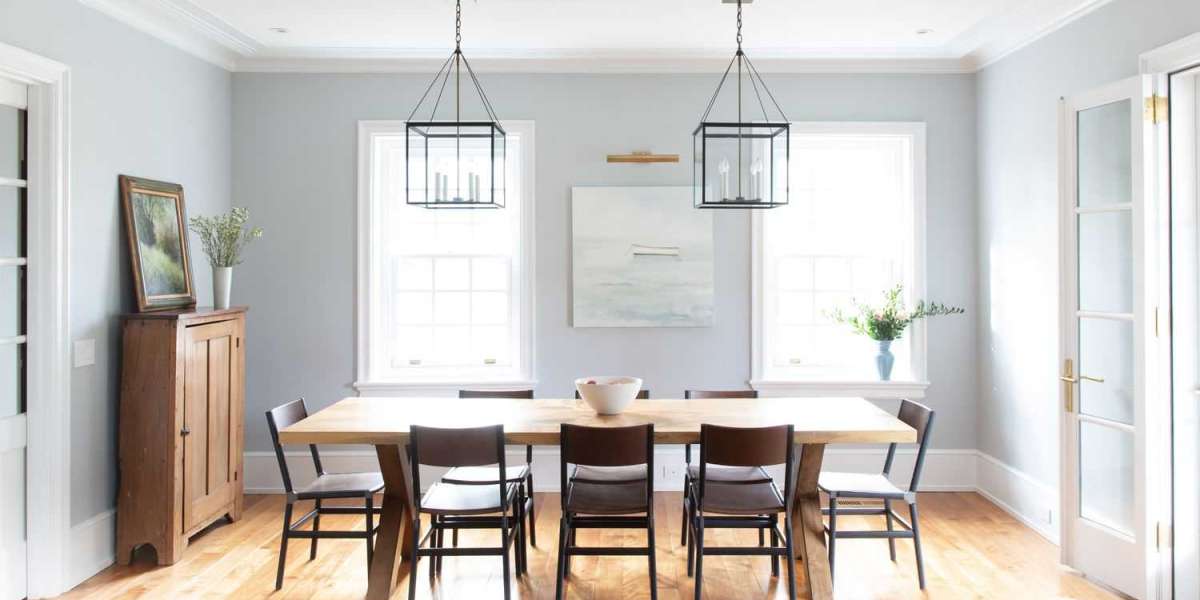When it comes to home design, trim work plays a crucial role in enhancing the overall aesthetic appeal. From crown molding to baseboards, the right trim can add character and sophistication to any space. This guide provides essential tips for homeowners looking to elevate their home’s aesthetic through thoughtful and stylish trim work.
Whether considering a simple upgrade or a complete renovation, understanding the impact of trim work can help make a significant difference. In this article, they will explore various types of trim, installation tips, and design ideas that can transform spaces in their homes.
Understanding Trim Work
What Is Trim Work?
Trim work refers to the decorative finishing touches applied to various areas of a home, including walls, windows, and doors. This includes:
- Crown Molding: Installed where walls meet ceilings, crown molding adds height and elegance.
- Baseboards: Running along the bottom of walls, baseboards protect the wall and add a finished look.
- Chair Rails: Placed at the height of a chair back, chair rails help protect walls from damage and can create visual interest.
- Window and Door Casings: These frames enhance the appearance of windows and doors while providing a seamless transition between different materials.
Types of Trim and Their Uses
Crown Molding
Crown molding is an excellent way to add sophistication to any room. It can create the illusion of height, making spaces feel larger and more open. Crown molding comes in various styles, from simple to elaborate, allowing homeowners to select a design that complements their décor.
Baseboards
Baseboards serve both a functional and aesthetic purpose. They protect walls from scuffs and damage while adding a polished look. Choosing the right height and style for baseboards can significantly influence a room's overall design.
Chair Rails
Chair rails are not only practical but also decorative. They can visually separate two colors or materials on a wall, adding depth and interest. Chair rails work well in dining rooms, living rooms, and hallways.
Window and Door Casings
Casings frame windows and doors, providing a finished look while enhancing architectural details. Choosing a casing style that matches the home's overall design can help create a cohesive appearance.
Tips for Choosing the Right Trim

1. Consider Your Home’s Style
When selecting trim, it’s essential to consider the overall style of the home. Traditional homes may benefit from more ornate trim, while modern homes might call for sleek, minimalistic designs. They should ensure the trim complements existing features, such as cabinetry and flooring.
2. Choose the Right Material
Trim can be made from various materials, including wood, MDF, and PVC. Wood trim offers natural beauty and can be stained or painted, while MDF is a budget-friendly option that is easy to work with. PVC is moisture-resistant and ideal for areas prone to humidity, such as bathrooms and kitchens.
3. Pay Attention to Scale
The scale of the trim is crucial in achieving a balanced look. Taller crown molding can enhance the height of a room, while wider baseboards can make a space feel more substantial. They should consider the proportions of the room and the furniture when selecting trim sizes.
4. Don’t Forget About Color
The color of trim can dramatically impact a room's aesthetic. White trim is a classic choice that works with virtually any color scheme. However, bold colors can make a statement and add personality to a space. They should consider using contrasting colors to create a striking look or softer shades for a more subtle effect.
5. Incorporate Decorative Elements
Incorporating decorative elements like rosettes, corner blocks, or medallions can add visual interest to trim work. These accents can elevate the trim, making it a focal point in the room.
Installation Tips for Trim Work
1. Gather the Right Tools
Before starting a trim installation project, it’s essential to gather all necessary tools. Common tools needed for trim work include:
- Miter saw
- Nail gun
- Level
- Measuring tape
- Caulk and caulking gun
- Sandpaper
2. Measure Accurately
Accurate measurements are critical for successful trim installation. They should measure each wall and door frame carefully to ensure the trim fits perfectly. Double-checking measurements can help avoid costly mistakes.
3. Cut at the Correct Angles
Using a miter saw, they can make precise cuts for corners and joints. For inside corners, a 45-degree angle cut is standard. For outside corners, they should use the same technique but ensure that the trim pieces fit snugly together.
4. Use a Level
Using a level during installation helps ensure that the trim is straight and even. This is particularly important for crown molding, as any misalignment can be more noticeable.
5. Finish with Caulk and Paint
Once the trim is installed, caulk any gaps between the trim and the wall or ceiling. This will create a seamless look. After caulking, they can paint or stain the trim to match the desired aesthetic. A clean finish can elevate the overall appearance of the trim work.
Designing with Trim Work in Mind
1. Create Visual Interest
Trim work can be used creatively to add visual interest to rooms. For instance, installing a chair rail at an unexpected height can create a unique design feature. Additionally, using two different paint colors above and below the chair rail can further enhance this effect.
2. Emphasize Architectural Features
Using trim strategically can highlight architectural features in the home. For example, framing a fireplace with elaborate trim can draw attention to it as a focal point. Similarly, accenting built-in shelving with crown molding can create a polished look.
3. Coordinate with Furniture
Coordinating trim work with furniture can help create a cohesive design. If the furniture has a particular style or color, they should consider reflecting that in the trim work. For example, using dark wood trim can complement dark furniture pieces beautifully.
FAQs about Trim Work
Q1: How do I choose the right trim for my home?
A: Consider your home's style, the material of the trim, and the scale in relation to your space. Also, think about color and decorative elements that can enhance the overall look.
Q2: Can I install trim myself, or should I hire a professional?
A: Homeowners with basic DIY skills can often install trim themselves. However, hiring a professional can ensure a polished finish, especially for more intricate designs.
Q3: What materials are best for trim work?
A: Common materials for trim work include wood, MDF, and PVC. Each material has its benefits, so choose based on the location and desired look.
Q4: How can I make my trim work look more modern?
A: For a modern look, opt for clean lines, minimalistic designs, and use neutral colors. Avoid overly ornate designs to keep the aesthetic sleek and contemporary.
Q5: Is trim work only for interior spaces?
A: While trim work is commonly used indoors, it can also enhance outdoor spaces, such as patios and decks, by framing areas and adding architectural interest.
Conclusion
Trim work can significantly enhance a home's aesthetic, providing character and sophistication. By understanding the various types of trim, choosing the right materials, and following essential installation tips, homeowners can transform their spaces beautifully.
For residents in Middletown, Delaware, Maryland, New Jersey, and Pennsylvania, JPM Home Services is ready to assist with expert trim work that elevates your home’s look. Whether it's updating existing trim or starting fresh with a new design, their team has the skills and experience to bring your vision to life. For more information, call (302) 598-6297 today and discover how they can help enhance your home’s aesthetic with beautiful trim work!



